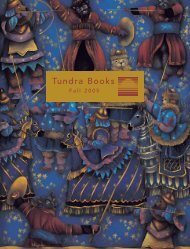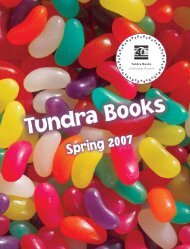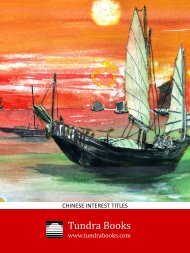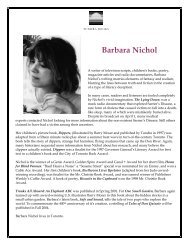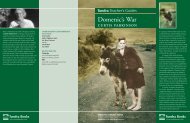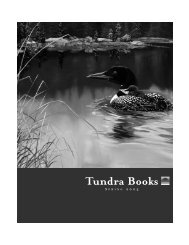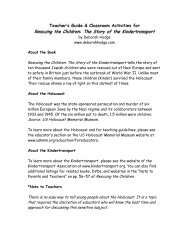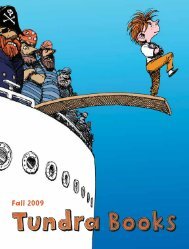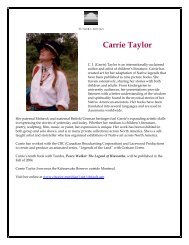World Vision Early Readers - Tundra Books
World Vision Early Readers - Tundra Books
World Vision Early Readers - Tundra Books
You also want an ePaper? Increase the reach of your titles
YUMPU automatically turns print PDFs into web optimized ePapers that Google loves.
Getting There Grades K-3<br />
Getting There<br />
Read the book out loud to students, using the questions<br />
below to prompt discussion about the photos. See list of<br />
photo credits in “Appendix B: Getting There Photo Credits”<br />
(page 9).<br />
1. Where are the people in this photograph coming from?<br />
Where are they going?<br />
2. What are they doing? How do you know?<br />
3. What is surprising about this photo?<br />
4. Are the people in the photo moving slow or fast? How<br />
can you tell?<br />
5. Close your eyes and imagine the sounds in this photograph.<br />
Make the sounds you might hear.<br />
6. Make the actions that go with this way of “getting there”.<br />
7. Whose voice is telling the story of Getting There?<br />
After Reading: Critical Thinking<br />
Ask students which modes of transportation were new to<br />
them. Add the new types of transportation to the pre-reading<br />
T-chart. Add another column to the chart for brainstorming<br />
other uses for each type of transportation (e.g. a horse can<br />
pull a wagon, a wheelbarrow can carry dirt). Classify different<br />
modes of transportation as human-powered, animalpowered<br />
or machine-powered. Which ones use more than<br />
one type of power?<br />
the three piles to create a five-line found poem. Missing<br />
but necessary words, such as pronouns or prepositions, can<br />
be added and word forms changed to suit the logic of the<br />
poem.<br />
Example: Pedal quickly!<br />
The smiling girl rides.<br />
Laughing friends,<br />
Setting sun,<br />
Big wheels take her home.<br />
Drama Activity: People Movers<br />
Divide class into groups of six to eight. Each group will<br />
construct a fantasy vehicle or machine that can move people<br />
from one place to another, using all members of the group.<br />
The only resource available is their bodies. Groups will<br />
need about 10 to 15 minutes to plan and rehearse their<br />
creations. Finished vehicles are presentedto other members<br />
of the class, complete with actions and sound effects. The<br />
audience tries to guess what the vehicle is and how it works.<br />
Suggested Getting There Art<br />
Activities: Grades 4 to 6<br />
Found Poetry: Words to Go<br />
Create a chart with three columns and headings on the<br />
board. Ask students to copy the chart onto lined paper.<br />
After a first read-through of Getting There, reread the<br />
text out loud, this time without showing the photos. Ask<br />
students to identify all the action words (verbs and verb<br />
phrases). Record them in the first column.<br />
Read through the book again, this time showing<br />
the photographs. Ask students to use descriptive<br />
language (adjectives and nouns) to describe the<br />
people and things in the images (e.g. smiling girl,<br />
sleepy baby, black horse, blue sea, big wheels).<br />
Record these ideas in the second column. Encourage<br />
students to think of as many descriptions as they can.<br />
Brainstorm a list of adverbs inspired by the photos<br />
and list them in the third column.<br />
Using scissors, students cut out the words from each<br />
column, keeping them in separate piles. Instruct them<br />
to manipulate and combine words and phrases from<br />
<strong>World</strong> <strong>Vision</strong> <strong>Early</strong> <strong>Readers</strong><br />
7




